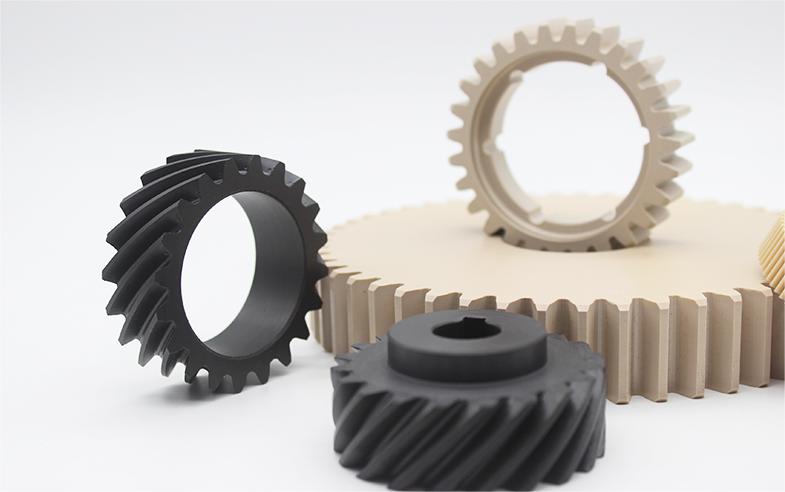
Privacy statement: Your privacy is very important to Us. Our company promises not to disclose your personal information to any external company with out your explicit permission.
HowTo CNC Machining of PEEK Works
PEEK machining involves a subtractive manufacturing process which removes excess material from a block of PEEK plastic by performing milling, turning or cutting operations.CNC machines read CAD model files and convert them into G-code programmes, which are then used to quickly create components from the raw material block.
The PEEK machining process is accurately regulated by a specialised computer system, which improves process reliability and consistency by reducing the possibility of human error.The size and feature requirements of the PEEK part dictate the choice of multi-axis machine, while a single set-up with complex geometry is necessary to ensure component accuracy.

Advantages and Disadvantages of Machining PEEK
PEEK is an alternative to metal when manufacturing parts, but like any other material used in manufacturing, it has its own pros and cons. Here, we will discuss both:
Advantages:
PEEK machining offers numerous advantages that can be divided into two categories: the inherent advantages of the PEEK material and the process-specific advantages of using a CNC machine to manufacture the PEEK material.
1. Corrosion resistance
PEEK is highly resistant to corrosive substances, exhibiting similar resistance to nickel steel and maintaining its non-corrosive chemical structure even at high temperatures. Usually, only powerful sulphuric acid has the ability to dissolve this plastic under normal conditions.
2. Low moisture absorption
Equipment or mechanical parts made from PEEK retain their chemical structure and quality in wet environments, making them ideal for use in steam, humid environments or pressurised hot water. In addition, even at higher temperatures, PEEK's resistance to hydrolysis enhances its suitability for use in these environments.
3. Irradiation resistance
PEEK components operate effectively when exposed to intense ionising radiation. It is more resistant to gamma radiation than Polystyrene.
4. High Temperature Resistance
PEEK plastic shows outstanding machinability CNC precision milling among plastics, thanks to its excellent handling capabilities. Despite being a high temperature thermoplastic, it is compatible with a wide range of material processing techniques.
PEEK's impressive thermal decomposition properties and machinability at high temperatures ensure its suitability for such applications. In addition, PEEK is self-extinguishing in the presence of fire and releases very little harmful gases or fumes.
5. Mechanical properties
PEEK exhibits excellent impact resistance and can maintain its shape at high temperatures.PEEK has high dimensional stability and low coefficient of linear expansion, and has the greatest resistance to stress and fatigue among polymers. In addition, its excellent creep resistance and resistance to deformation when exposed to stress for extended periods of time make it the best material for handling high processing stresses.
In addition, PEEK has excellent wear resistance and a low coefficient of friction, which allows it to be used in a variety of physical environments (e.g., temperature, pressure, speed, and surface roughness about the point of contact.
Disadvantages
Despite the many advantages of PEEK machining, it also has several disadvantages. Here are some of them:
Special precautions are required to minimise heat-induced internal tension and fracture.
PEEK processing may require annealing.
Inefficient heat transfer is another disadvantage of PEEK machining.
Over drilling may lead to cracking.
Precautions for PEEK CNC machining
1. High temperature and pressure
To prevent surface cracks and internal stresses from occurring due to heat generated during the cutting process, PEEK rods are subjected to an annealing process prior to machining. This process is used to release tension and reduce the possibility of distortion. Depending on how long the machining process takes, more than one annealing procedure may be required, such as initial annealing before roughing and subsequent annealing before finishing to avoid cracking.
2. Tool wear
The process of machining industrial grade PEEK polymers is comparable to that of most medical grade variants. Nonetheless, medical grade PEEK typically contains stiffer carbon fibres and therefore the PEEK material needs to be softened prior to machining to limit tool wear.
3. Cutting tools
When working with natural PEEK, cutting tools are usually recommended to consist of silicon carbide. However, if carbon fibre reinforcement is present or very tight tolerances are required, diamond tools are the best choice. In addition, the use of pure water as a coolant during machining is essential to eliminate the cutting heat generated.
CNC Machining of Polyetheretherketone
4. Drilling
The low elongation of PEEK compared to other polymers can lead to cracking when drilling deep holes.
5. Contamination
For contamination during machining, workpieces, CNC machines, fixtures, and workpiece tools must be kept separate from other materials and must not be mixed. For added protection, operators must wear gloves during machining.
6.Coolant
Since PEEK does not dissipate heat, it tends to deform or break during machining, so it needs to be cooled. Standard liquid coolants can be used when machining PEEK parts for medical purposes. However, compressed air cooling of the material is necessary in this case, as liquid coolants may threaten the biocompatibility of PEEK.
LET'S GET IN TOUCH

Privacy statement: Your privacy is very important to Us. Our company promises not to disclose your personal information to any external company with out your explicit permission.

Fill in more information so that we can get in touch with you faster
Privacy statement: Your privacy is very important to Us. Our company promises not to disclose your personal information to any external company with out your explicit permission.